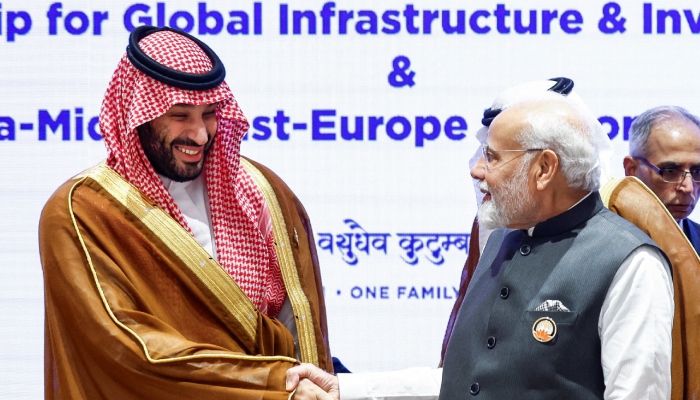Comment: India-Middle East-Europe corridor — a pipe dream?
Important consideration is whether IMEC corridor will generate sufficient economic value to warrant such monumental investment
September 11, 2023

The concept of an India-Middle East-Europe (IMEC) economic corridor is undeniably ambitious, presenting a multitude of challenges and complexities. One pressing question is: From where will the substantial investment, estimated to be in the hundreds of billions of dollars, be sourced? Additionally, the precise magnitude of demand for trade and economic activities along this corridor remains unquantified, leaving us to ponder its potential economic impact.
An important consideration is whether the IMEC corridor will generate sufficient economic value to warrant such a monumental investment. What measures are being taken to mitigate the inherent risks and uncertainties associated with this endeavor? Lastly, how will geopolitical factors and regional dynamics influence the corridor’s development and operation? Navigating the intricacies of trade agreements and tariffs among the participating nations is of paramount importance. These agreements must effectively tackle a range of issues, including but not limited to customs procedures, import/export regulations, and taxation, all of which exhibit substantial variations across different countries.
The corridor would span across multiple countries with diverse terrains, cultures, and political landscapes. It would need to traverse India, the Middle East, and various European nations. Coordinating infrastructure development and trade agreements among these nations could be extremely complex.
Building the necessary infrastructure, such as roads, railways, ports, and pipelines, to connect these regions would require massive investments. Maintaining and securing this infrastructure against geopolitical tensions and natural disasters would also be challenging.
The corridor would pass through regions with complex political dynamics and potential conflicts. Diplomatic efforts would be required to ensure the smooth flow of goods and services without disruptions.
Ensuring the security of goods and people along such a vast corridor would be a top priority. This involves addressing piracy concerns in maritime routes, terrorist threats and border security.
Cultural and linguistic diversity across the regions pose communication and coordination challenges. Understanding and respecting local customs and business practices would be essential for success.
Developing a massive economic corridor will have a significant environmental impact. Proper environmental assessments and sustainable practices would need to be incorporated into the project. Technological integration and implementing modern technologies for transportation, logistics, and data management would be essential for the efficient operation of such a corridor. Harmonizing regulations and standards for various industries, such as logistics, finance and energy, would be vital for seamless operations.
In conclusion, while the concept of an India-Middle East-Europe (IMEC) economic corridor may hold promise on paper, it is, in reality, a formidable pipe dream fraught with a myriad of logistical, economic, political, and environmental challenges.
The sheer scale of investment required, estimated to reach into the hundreds of billions of dollars, raises questions about its feasibility and the potential return on investment. The demand for trade and economic activities along this corridor remains uncertain and unquantified. The idea of the IMEC economic corridor may be enticing, the formidable challenges and uncertainties that accompany such a grand vision make it more akin to a pipe dream than a feasible reality.
The writer is a columnist based in Islamabad. He tweets/posts @saleemfarrukh and can be reached at: [email protected]
Disclaimer: The viewpoints expressed in this piece are the writer's own and don't necessarily reflect Geo.tv's editorial policy.
Originally published in The News









